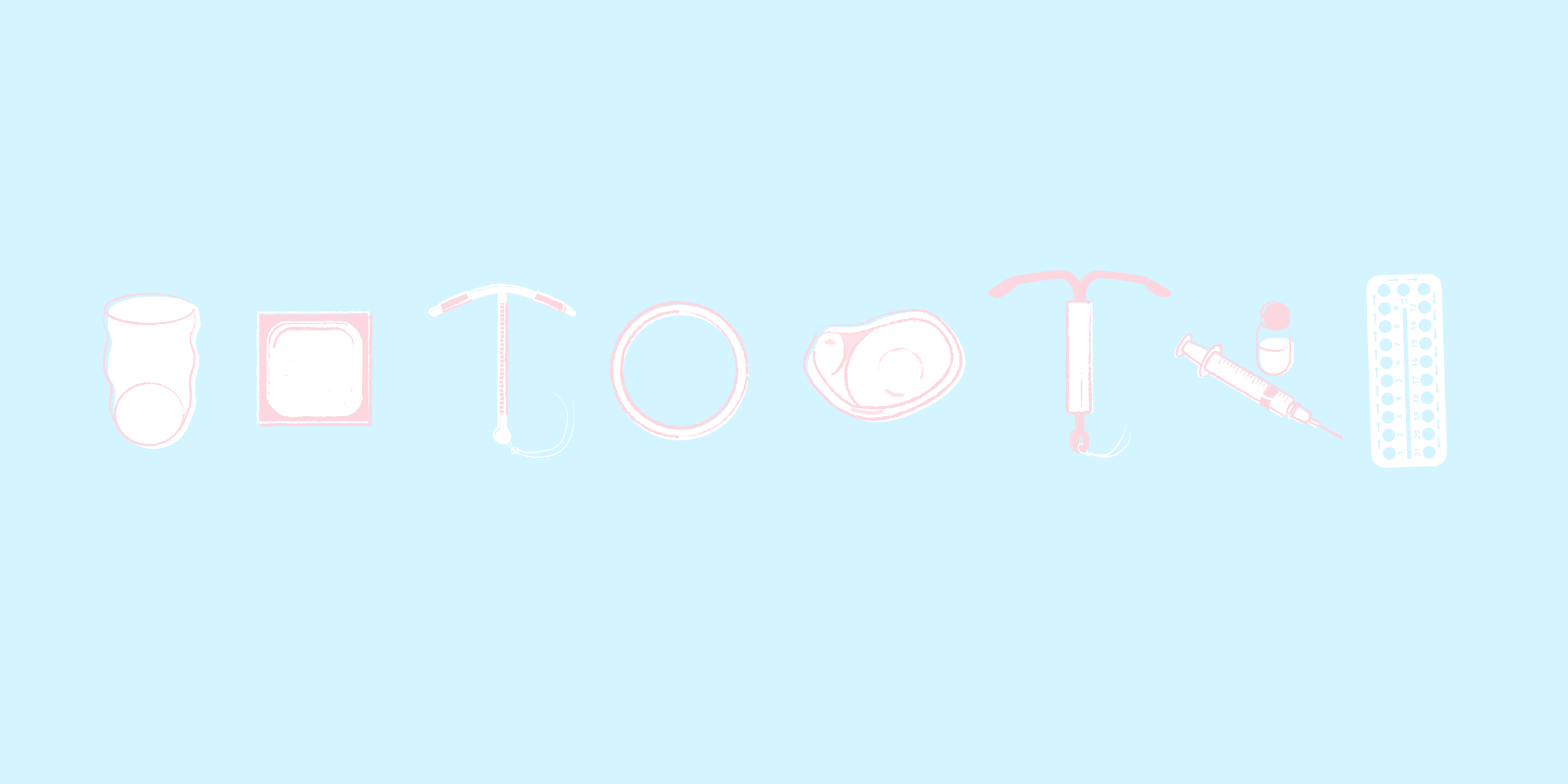Key Takeaways
- Find out in this article how breastfeeding affects your fertility and what options there are for getting pregnant while breastfeeding.
- Discover the WHO guidelines on the lactational amenorrhea method and how you can use them for natural contraception.
- You will also receive valuable tips on planning a new pregnancy and find out how a new pregnancy can affect your breastfeeding child and your milk production.
You might be wondering if it's possible to get pregnant while breastfeeding. This question concerns many mothers who are looking to continue their family planning. The truth is, breastfeeding and becoming pregnant is indeed possible, although many believe it isn’t. It depends on various factors.
In this article, you'll learn how breastfeeding affects fertility and the methods available to conceive while nursing. We explore the WHO guidelines on the Lactational Amenorrhea Method (LAM) and offer tips on planning a pregnancy during breastfeeding. We also explain the potential effects of a new pregnancy on your nursing child.
WHO Guidelines on the Lactational Amenorrhea Method (LAM)
The Lactational Amenorrhea Method (LAM) is a natural form of contraception after childbirth. It is based on the assumption that ovulation is suppressed in breastfeeding women. If you meet certain conditions, LAM can provide protection against pregnancy.
Requirements for LAM
The World Health Organization (WHO) has clear guidelines for using LAM. To use this method, you must meet three important criteria:
- No menstruation: You haven’t had any menstrual bleeding or bleeding lasting more than two days since giving birth. Bleeding within the first two months after birth is not considered.
- Exclusive or near-exclusive breastfeeding: You are fully breastfeeding your baby or giving supplemental food or fluids no more than once or twice a week.
- Baby’s age: Your baby is younger than six months.
If you can answer "yes" to all three questions, you meet the requirements for LAM. It’s important to note that these criteria are presented as an algorithm. Once one of these criteria is no longer met, you should immediately begin using another contraceptive method.
Reliability of LAM
The reliability of LAM has been studied and confirmed in scientific research. If all conditions are met, LAM provides 98-99% protection against pregnancy. This level of security is comparable to modern contraceptive methods.
Despite its high reliability, knowledge about LAM is often limited among the general public. One study showed that only 8% of women believed that exclusive breastfeeding "very safely" reduces the risk of pregnancy within six months after childbirth. Even fewer, just 2%, considered exclusive breastfeeding more effective than birth control pills or condoms.
Interestingly, women who wanted to use LAM were better informed. 84% knew that breastfeeding delays the return of menstruation, compared to 44% of those considering other contraceptive methods.
Limitations of LAM as a Contraceptive Method
While LAM can be an effective method, it also has its limitations:
- Time limitation: LAM is only applicable in the first six months after birth. After this, the likelihood of ovulation before the first menstrual period increases.
- Strict adherence to criteria: All three criteria must be consistently met. Once one is no longer met, protection is no longer guaranteed.
- Restrictions on pumping: If you pump milk more than a few times a week, you should consider additional contraception.
It’s important to understand that while LAM can be effective, it requires careful observation and strict adherence to the criteria. If you’re interested in LAM, it’s best to discuss the method before birth or at your first postpartum check-up to ensure you understand the requirements and apply the method correctly.
Planning a Pregnancy During Breastfeeding
Timing and Spacing Between Pregnancies
If you’re considering becoming pregnant while breastfeeding, it’s important to choose the right time. The World Health Organization (WHO) has recommended since 2005 that women wait 24 months after giving birth before becoming pregnant again. This recommendation is based on studies showing that shorter intervals between pregnancies can lead to complications.
Research indicates that waiting less than 12 months or more than 24 months increases the risk of complications. Particularly critical are intervals of less than six months, which significantly increase the risk of preterm births. On the other hand, waiting more than five years can also be problematic and increase the likelihood of complications.
Based on these findings, experts recommend waiting 12 to 18 months between pregnancies. This period allows your body to recover sufficiently and prepares you optimally for a new pregnancy.
Preparing Your Body
Preparing your body for a new pregnancy is crucial for your health and that of your future baby. After giving birth, your body needs time to recover. As a general rule, the recovery period should be at least as long as the pregnancy.
During this time, important postpartum processes occur. Most women have their first new menstrual period and the return of the female cycle within the first six months after birth. This signals that the hormonal situation has readjusted and the uterine lining is rebuilding.
If you gave birth by cesarean section, it’s especially important to wait at least 18 to 24 months before your next birth. Otherwise, there’s an increased risk of a scar rupture, which can lead to life-threatening complications for you and your child.
To prepare your body optimally, you should:
- Focus on a balanced diet.
- Incorporate regular moderate exercise into your daily routine.
- Ensure adequate sleep and rest.
- Reduce stress and learn relaxation techniques.
Conversations with Partner and Gynecologist
Before planning a new pregnancy, it’s important to have open conversations with your partner. Make sure you’re both ready for another child and that your expectations align. A stable relationship and emotional support are key factors for a successful pregnancy.
Equally important is a discussion with your gynecologist. They can help you determine the optimal waiting period, which depends on factors like your age and any pre-existing conditions. During this appointment, you should:
- Discuss your medical history.
- Have a thorough examination, including a vaginal ultrasound.
- Check your vaccination status, especially for rubella, flu, and COVID-19.
- Discuss any potential changes in your medication, if you’re taking any.
Your prolactin levels can also be checked through a blood test. High levels, even with infrequent breastfeeding, can prevent ovulation and pregnancy.
Remember that psychological factors can also play a role. Stress and subconscious factors can influence fertility. Take time to reflect on your feelings and motivations and discuss them openly.
With the right preparation, patience, and professional support, you can successfully navigate the path to a healthy pregnancy during breastfeeding.
Effects of Pregnancy on the Nursing Child
Changes in Milk Composition
If you become pregnant while breastfeeding, it will affect your milk production and composition. The amount of milk produced decreases during pregnancy, with the timing and extent of changes varying from person to person.
Mature breast milk gradually transitions to colostrum. This is yellow, thick, and particularly rich in nutrients. It contains high levels of proteins, vitamins, and antibodies but is low in fats and carbohydrates. Colostrum is available as early as the 16th week of pregnancy.
During pregnancy, the sugar content of milk decreases while the salt content increases. These changes can make the taste and texture of the milk noticeably different for your nursing child.
Possible Reactions of the Child
The changes in milk composition can lead to various reactions in your nursing child:
- Increased breastfeeding: Some children may want to nurse more frequently than before.
- Discontent: Some children may become fussy at the breast.
- Changed eating behavior: Children who previously met a significant portion of their nutritional needs through breastfeeding may begin to eat significantly more solid foods.
- Rejection: Some children may reject the breast due to the changed taste and texture of the milk.
- Weaning: Some children gradually lose interest in breastfeeding during the pregnancy.
It’s important to note that every child reacts differently. Some may pause breastfeeding during pregnancy and resume later, while others may stop breastfeeding altogether.
Tandem Nursing
If you decide to nurse both your older child and your newborn, this is known as tandem nursing. This can bring both challenges and benefits.
Advantages of Tandem Nursing:
- Emotional connection: Many women enjoy the deep emotional bond that breastfeeding fosters.
- Quiet time: Nursing can provide a welcome “quiet” time in a hectic day.
- Support with milk engorgement: Older nursing children can help relieve engorgement or milk stasis by effectively emptying the breast.
- Easier transition: Nursing can help the older child adjust to the new sibling.
- Sibling bonding: Some parents report a particularly close relationship between siblings due to tandem nursing.
Challenges of Tandem Nursing:
- Increased nutritional needs: You must ensure a balanced diet to meet the needs of both children.
- Time management: It’s important to nurse the newborn first so they can benefit from the colostrum.
- Discomfort: Some mothers find nursing the older child uncomfortable or painful, while nursing the younger child remains pleasant.
To successfully manage tandem nursing, focus on getting enough sleep, eating a healthy diet, and seeking support in your daily life. It’s also important to be flexible and try new nursing positions that accommodate your growing belly.
Remember that every nursing relationship is unique. What works for one family may not work for another. Listen to your instincts and your children’s needs, and don’t hesitate to seek professional support if you have questions or concerns.
Conclusion
You now have a comprehensive overview of how breastfeeding and pregnancy are related. The Lactational Amenorrhea Method can provide reliable protection if you strictly follow the criteria. If you’re planning a new pregnancy, it’s important to choose the right time and prepare your body accordingly. Discuss your plans openly with your partner and doctor.
A new pregnancy will impact your nursing child and your milk production. These changes can lead to various reactions, from increased nursing to weaning. Tandem nursing is an option that comes with both challenges and benefits. Listen to your instincts and your children’s needs to find the path that’s right for you.
Medically Reviewed
This text was created by medical editors on the basis of specialist medical literature and current studies. Our aim is to work scientifically, identify sources and regularly check that the content is up to date.
References & Literature
- Gesund ins Leben, Veröffentlichungen der Nationalen Stillkommission,
- Bundesinstitut für Risikobewertung
- Schummers L, Hernandez-Diaz S, Williams PL, Hacker MR, VanderWeele TJ, Normann WV: Association of Short Interpregnancy Interval With Pregnancy Outcomes According to Maternal Age. JAMA Intern Med. 2018:178(12):1661-1670. doi: 10. 1001/jamainternmed. 2018.4696.
- Expertenforum Medikamente in der Stillzeit. 10. Still- und Laktationskongress, Berlin, 2015.
- Academy of Breastfeeding Medicine: ABM Clinical Protocol #13: Contraception during breasfeeding, Revised 2015. http://www.bfmed.org/Media/Files/Protocols/Contraception During. Breastfeeding.pdf
- Royal College of Obstetricians & Gynecologists: Faculty of Sexual & Reproductive Healthcare (FSRH): Fertility awareness methods, lactational amenorrhoea, fertility monitoring devices, me-thod-specific guidance, 2015.
- World Health Organization: Medical eligibility criteria for contraceptive use. 3. Auft. WHO, Genf, 2004.
- Freundl G: Stillen und Empfängnisverhütung. In: Bundeszentrale für gesundheitliche Aufklärung (Hrsg): Stillen und Muttermilchernährung 2001:171-183.
- Mohrbacher N, Stock J: Handbuch für die Stillberatung. La Leche Liga, 2002
- Sottong U und Freundl G: Über das Stillen und die Rückkehr der Fruchtbarkeit nach der Geburt. In: Schriftenreihe des BMFFG (Hrsg.): Stillen und Muttermilchernährung. 1992 Bonn





